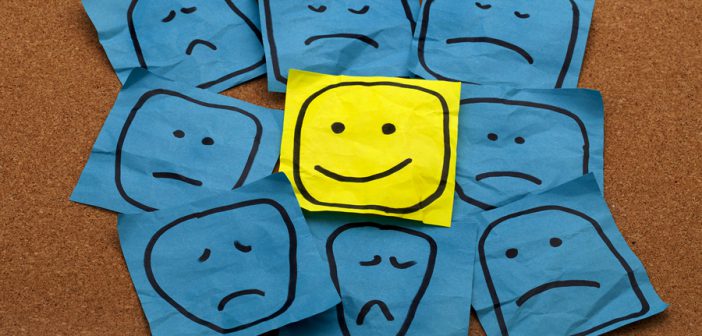Columnist Kerry Jones digs into new research on the role of arousal and dominance in viral sharing.
If you’re looking to attract high engagement through content marketing, it’s essential to understand why people choose to share and interact with content.
New research suggests that it’s not just individual emotions, such as surprise or anger, that spur high levels of engagement needed to make something “go viral.” It turns out some emotions are extremely effective at driving people to share due to the levels of arousal and dominance they ignite.
The right levels of emotional sentiment and arousal have long been known to be key elements in effective marketing messages. But this research has found that a third emotional factor, called dominance, may play a key role in getting people to talk about your content.
The role of valence, arousal and dominance in viral content
What’s unique about viral content is that it stimulates emotions that fall within certain configurations on the Valence-Arousal-Dominance model, an emotional categorization scale made up of three factors that measure how people react to different stimuli. These factors are called valence, arousal and dominance:
- Valence is the positivity or negativity of an emotion.
- Arousal describes the level of excitement different emotions elicit. Anger and joy tend to be high arousal, while sadness and reflection have low arousal levels.
- Dominance relates to feeling in or out of control. Fear has low dominance, while anger is considered high dominance.
The researchers looked at 65,000 articles on two sites that allow readers to give emotional scores to content. They found that the articles with high numbers of social sharing often elicited feelings of being in control, or high dominance.
This finding explains why people tend to share a lot of “feel-good content” that’s inspiring or joyful.
When it came to the articles with a lot of comments, the researchers found high-arousal emotions, such as anger, paired with low-dominance (or “out of control”) emotions, such as fear, drove discussion around the articles. Consider how many angry comments you’ll see on the average politically charged article, and this finding isn’t too surprising.
TL;DR: High arousal is crucial for spurring discussion, while high dominance is a key driver for social sharing behavior.
The emotional combinations behind viral content
So how can marketers apply this knowledge? Our team at Fractl dug deeper to better understand what dominance and arousal mean for content creators. In our latest study on viral emotions, we examined the additional emotional factors that explain why people are driven to share content.
As part of our research, we asked 400 people to rate their emotional responses to a collection of the 100 most shared images on the Reddit subgroup r/pics. We then charted the responses to each image on the PAD model, similar to the Valence-Arousal-Dominance model, to see the levels of dominance and arousal ignited by each emotion.
Looking at the top 10 emotional responses from our survey, you can see that positive emotions were extremely common. The top three emotions elicited were happiness, surprise and admiration. The only emotion without a positive connotation is concentration, which is considered a neutral emotion.

On the surface, you might believe that all it takes to go viral is a feel-good message. But when you consider the relationship between arousal, dominance and emotional sentiment, you can see that there’s much more to it.
A few combinations of arousal and dominance occurred most frequently in the emotional responses in our survey, as illustrated in the chart below.

- When both arousal and dominance were high, the emotional responses were either all positive or a mix of positive emotions and surprise. This tells us that lighthearted content doesn’t need to be emotionally complex to perform well.
- When arousal was high but dominance was low, the emotional responses were more complex. In other words, content that makes people feel a lack of control needs to take them on an emotional rollercoaster for it to be engaging.
- When both arousal and dominance were low, the content always included an element of surprise.
What does this mean for marketers? 3 takeaways for increasing engagement
Content creators looking to increase social engagement should incorporate specific emotional combinations into their content in order to stimulate the right levels of arousal and dominance to spur action.
Happiness and surprise are a winning combination for social sharing
Content that pairs happiness and surprise makes people feel good, while showing them something they didn’t expect or have never seen before. This uplifting emotional experience is what makes people share positive content.
You need to look no further than the recent phenomenon of Chewbacca Mom to know that light-hearted but compelling content rules when it comes to social sharing.
Want people to comment? Play up high-arousal emotions
Even if your content isn’t surprising, it can still drive a ton of engagement if it hits the right emotional hot buttons. High-arousal emotions elicit commenting behavior, so if you want people talking about your content, incorporate arousing emotions like anger and excitement.
Don’t be a total downer; pair sadness with surprise and admiration
Content that doesn’t ignite high arousal tends to do well when it includes an unexpected twist or an element of admiration. Even sad content can perform well socially; the key is to include some form of a silver lining to avoid making your content downright depressing.
To learn more about the emotional combinations that ignite engagement, check out the raw data from our viral images survey.
This article first appeared in www.marketingland.com




